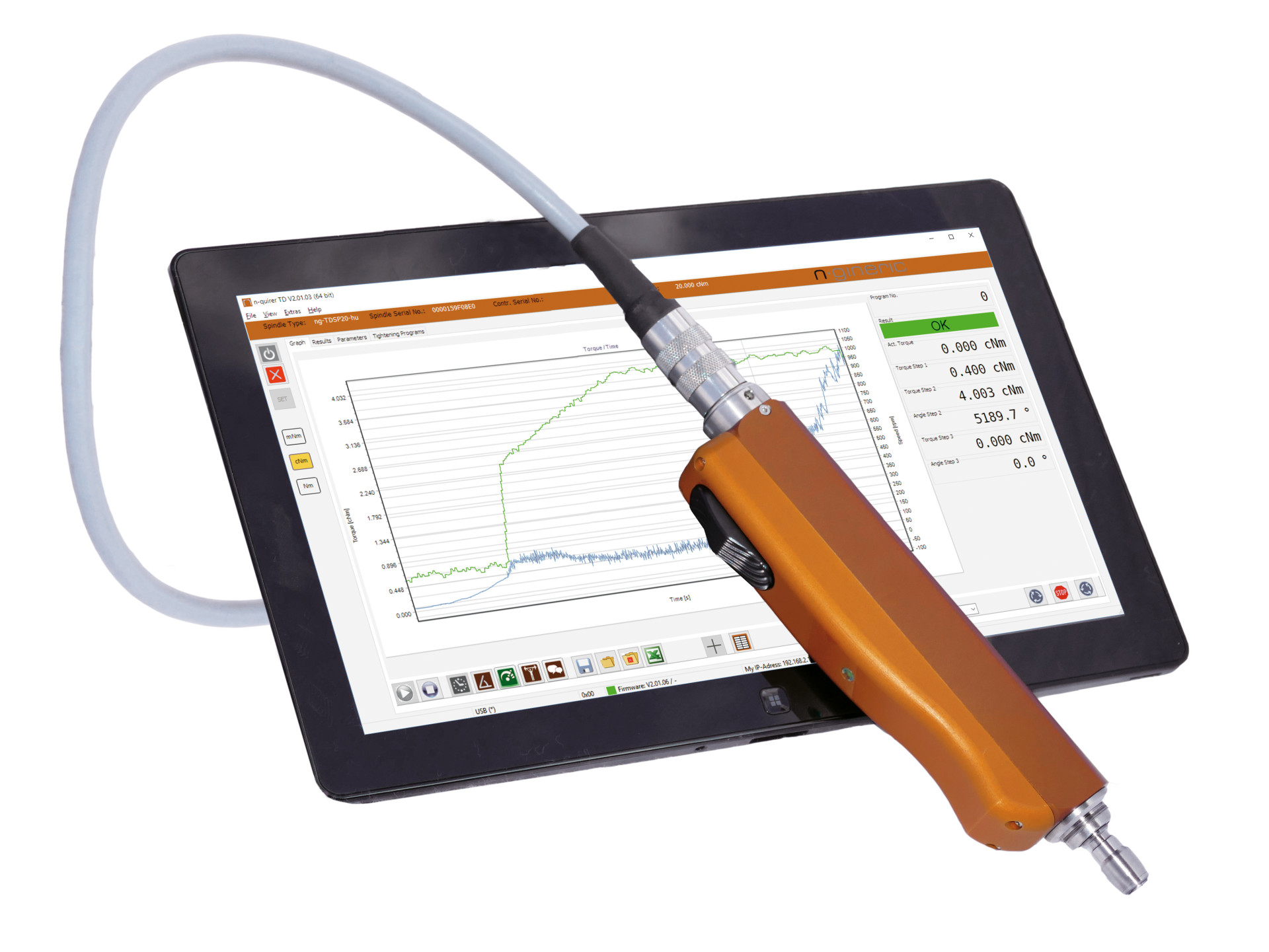The micro sensor screwdriver systems from n-gineric can be used both manually and in automation systems. They are predestined for process-safe mounting of extremely small screws (from thread size of M 0.6) such as those found in mobile phones, smart watches or "classic" wristwatches.
Threaded connections up to a thread size of M5 are covered by several screw spindle sizes.
In order to ensure that the screwdriving process is reliable, the screw spindles are equipped with an integrated rotating torque/rotational angle sensor, with which the torque acting upon the threaded connection and the rotational angle is measured with the extremely high precision directly above the blade holder.
The torque measuring principle is based on deformation measurement using strain gauges. A rotation-symmetrical sensor body (in the form of a measurement shaft) made from an alloy attached between the blade chuck and the FAULHABER drive deforms proportionally to the applied torque, resulting in a resistance change within the strain gauges. The result is a measurement signal which follows the torque, which is electronically prepared on the rotating measurement shaft and digitised with an extremely high resolution (24 bits).
The power supply to the rotor electronics is provided contactlessly (inductive) via a coil system, and independently of this 2,000 torque measurements per second in the form of a serial bit code are transmitted opto-electronically from the rotor to the stator electronics, where they are decoded again, i.e. depicted 1:1 without losses.
"To my knowledge, we are the only company to install the rotating torque sensors into a screw spindle for small torques with comparable precision", says Stefan Flaig, General manager of n-gineric.
"Of course, the motor and the gearhead play an extremely important part in these systems", emphasises Stefan Flaig. "We need high power with extremely small dimensions and a considerable amount of dynamics, because fast control of the torque and speed is needed for every screwdriving process within a sequence of screwdriving stages."
Of course, the motor and the gearhead play an extremly important part
The FAULHABER drive unit with brushless motor and planetary gearhead provides the ideal performance for this. "We achieve very short cycle times due to the high acceleration capacity of the drives, i.e. excellent productivity. The brushless FAULHABER drive is also characterised by having an extremely long service life, therefore qualifying the screwdriving system for mass production under 24/7 conditions."
Particularly for safety-relevant threaded connections in the automotive area (risk class A threaded connections, VDI directive 2862), screwdrivers must be equipped with sensor systems for measuring at least one control variable, explains Stefan Flaig. "We measure the torque and the rotation angle directly, and also have redundancy as a third variable by simultaneously recording the motor current. This is used for permanent self-monitoring of system integrity.

We measure torque and rotation angle directly
In full-automatic screw fixing, a sensor screwdriver such as this is the best choice because it safeguards the core process of the automation system.
Screwdriving processes which are difficult to control with little "leeway" between a loose screw (without clamping force) and the destruction of the screw connection (due to over-rotation) can be kept in check by means of multi-stage precision screwdriving. Defective workpieces cause screwdriving errors which can be reliably detected by multiple overlaid parameter windows within the crewdriving stage sequence (zero error production).
A considerable amount of value was placed on making the systems intuitive and simple to operate using Windows software. This is used to program the screwdriving parameters, provides process transparency by means of a differentiated display of the screwdriving curves in real time, and provides the best possible options for process data documentation.
Combining a screwdriving automation system with an intelligent, stationary torque sensor with a screw falling simulator makes automated cyclic checking of the screwdriving system’s machine capability possible, e.g. every day before the start of a shift.



